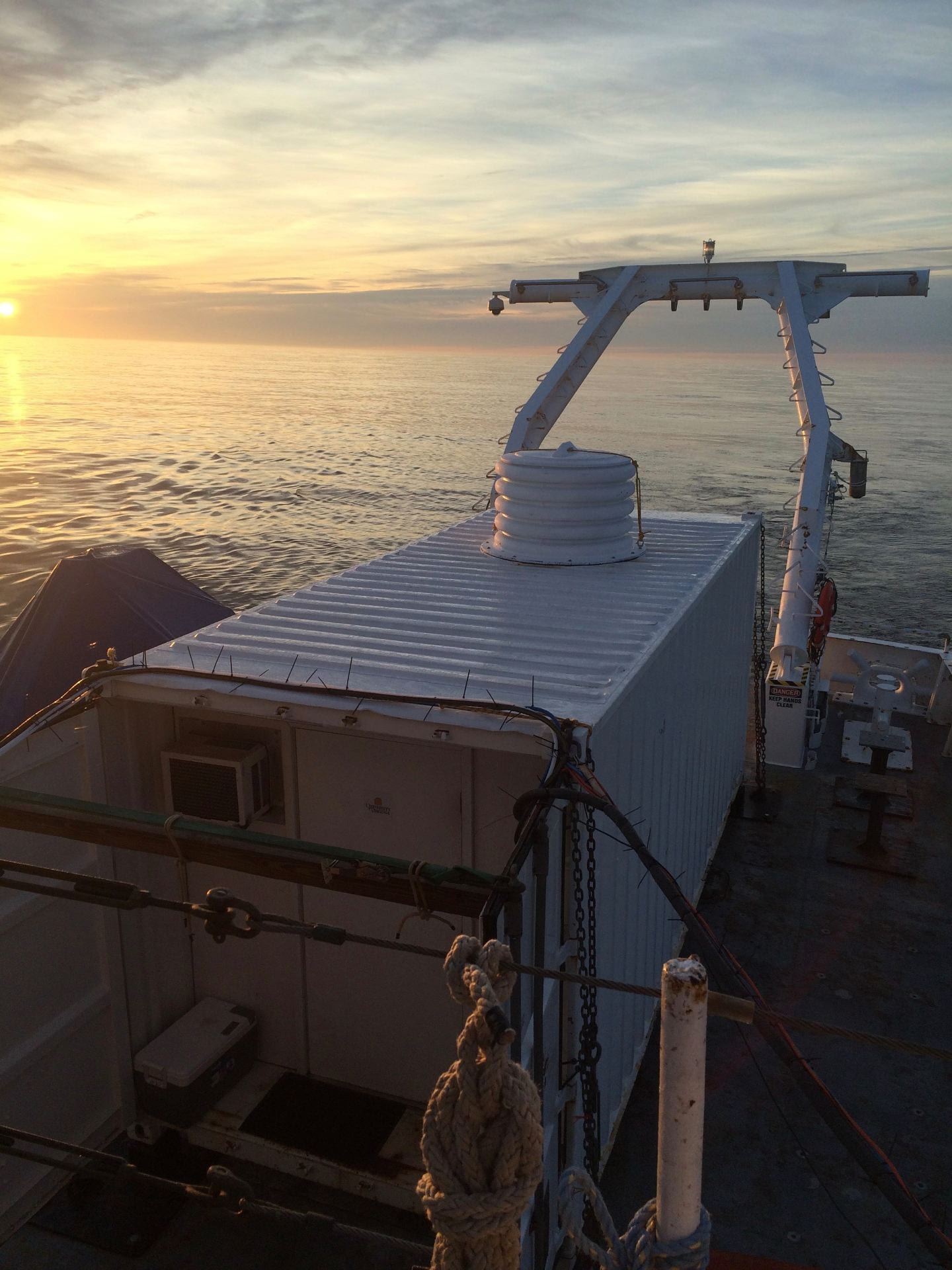Traditional Disciplines
While we do not have strict disciplinary boundaries at SoMAS, for many students and researchers the traditional research areas of marine, atmospheric and environmental science may be useful in understanding the research that occurs here.
Research in Atmospheric Sciences at the Institute for Terrestrial and Planetary Atmospheres is centered around the following themes: (1) Climate Change and Impact, (2) Mesoscale Ensemble Forecasting, (3) Data Assimilation and Integration, (4) Model Analysis and Improvement, (5) Atmospheric Chemistry and Aerosol, (6) Atmospheric Dynamics, (7) Interaction Between Climate and Marine Biology.
To tackle these challenging questions faculty at ITPA use a variety of exceptional infrastructural means such as: The BlueGene supercomputer, locally run numerical weather prediction model (MM5) and the Weather Research and Forecasting (WRF), remote sensing data, and laboratories equipped with state-of-the-art instruments to measure atmospheric trace gases and to determine aerosol-cloud and aerosol-gas phase interactions.
Researchers:
Aller J., Chang, Colle, French, Hameed, Kim, Knopf, Kollias, Liu, Mak, Reed, Shepson, Zhang
Biological Oceanography and Marine Biology
Biological Oceanographers are interested in developing a better understanding of how living things influence and are influenced by the structure and function of marine systems. At Stony Brook, Biological Oceanographers and Marine Biologists often collaborate closely with their colleagues trained in the other oceanographic disciplines and with atmospheric scientists as they study a variety of organisms including viruses, bacteria, phytoplankton and zooplankton, benthic animals, and fish.
Researchers:
Allam, Aller J., Aller R., Cerrato, Collier, Fisher, Frisk, Gobler, Lonsdale, Lopez, McElroy, Peterson, Taylor, Volkenborn, Warren
Chemical Oceanography
Chemical oceanographers seek to understand how the ocean functions as a chemical system and how oceanic biological, geological and chemical processes control the chemistry of seawater and sediments. Indeed, many faculty at SoMAS study the interactions of biology, chemistry and geology in the oceans and thus work in an area termed ‘biogeochemistry’. As this term implies, chemical oceanographers often collaborate with biological and geological oceanographers in studying broad, multidisciplinary areas such as the ocean carbon cycle. Chemical oceanographers at SoMAS also study the distribution and fates of a wide range of chemical species in the ocean, including trace metals, radionuclides, organic compounds and dissolved gases. Often these various chemical species are used as tracers to better understand the dynamics of oceanic processes.
Researchers:
Aller R., Beaupré, Black, Cochran, Fisher, Volkenborn, Wehrmann Zhu
Geological Oceanography
The Marine Geology program at SoMAS has a strong focus on continental margin systems, from the slope and shelf up through the shoreline and coastal plain. These diverse settings are very dynamic and are where the interactions between land and sea and the influence of humans are greatest. Within this realm SoMAS geologists are investigating fundamental processes that control changes in our shorelines, seafloor, and coastal groundwaters, particularly as related to anthropogenic forcings and future impacts under global climate change. Together with other researchers in SoMAS, interdisciplinary questions centered about coastal dynamics, benthic processes and resources, sea-level rise, and continental margin development comprise some of the major research topics on which we focus.
Researchers:
Physical Oceanography
Research in physical oceanography deals with some of the most challenging problems in classical physics and fluid dynamics. With improved observing tools, increased computing power, and new analytical understanding, this field is at a stage of rapid evolution. Tools of trade include space satellites, numerical modeling, satellite-tracked buoys, and ships. Major cooperative research efforts are dramatically changing our understanding of the dynamics of the and atmosphere-ocean coupling. The results of these studies have impacts on a yet broader range of oceanic, geological, chemical, biological, engineering, and societal problems, e.g., coastal and estuarine dynamics in the Hudson River, Long Island Sound, Chesapeake Bay, Santa Barbara Channel, and mid-Atlantic Bight.
Researchers:







